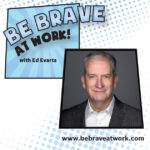Ego and inner critic stories create what leadership coaches commonly call “limiting beliefs.”
A limiting belief is a story that you tell yourself, whether true or false, that does not help you.
The characteristics of limiting beliefs
Regardless of whether the stories that you tell yourself are coming from your ego or your inner critic, your limiting beliefs have the following characteristics in common. You –
- Tell limiting beliefs primarily to yourself, although you may share your beliefs with others at a later time.
- Create limiting beliefs to fill in missing information.
- Believe your limiting beliefs are true, whether they are true or false.
- Make behavioral choices based on your limiting beliefs.
Since your limiting beliefs inform your behavioral choices, consider the impact that the stories you are telling yourself have on your behavior.
Essentially, you will make behavioral choices based on information that you believe to be true. Whether your behavior is conscious (purposefully chosen) or unconscious (the natural way you react to something), some type of behavior will surface. In its effort to shield you from external behavior that is negatively impacting you, your ego fills in information that may or may not be true, and where limited information exists. Remember the rallying cry of your ego – “It’s not me, it’s them!”
Concurrently, a limiting belief may take the form of your inner critic filling in information where limited information exists.
Limiting beliefs and their effects
You adopt a limiting belief that a meeting is not valuable, so you don’t attend. Perhaps you don’t think anyone reads your organization’s newsletter, so you don’t submit an article. By filling-in missing information with limiting beliefs, you are limiting your options in ways that do not help you. Not only are you lessening your options, you are allowing limiting beliefs to creep into your mind. You begin to feel:
- Negative
- Disenfranchised
- De-Energized
Take a few minutes to identify limiting beliefs that you may have told yourself recently, and consider whether the stories you told yourself are true or false and look at your subsequent behaviors.
If the story you are telling yourself about participating is not true, you are at risk of behaving in a way that does not help you raise your visibility in your organization and industry. What can a business professional do about this? How do you combat this onslaught of stories that you create for yourself that are not helping you?
Stay tuned!
~~~~~~~
Raise Your Visibility & Value: Uncover the Lost Art of Connecting on the Job is available
in AUDIO FORMAT here on Amazon and iTunes
and in HARD COPY here on Amazon and Barnes & Noble.







